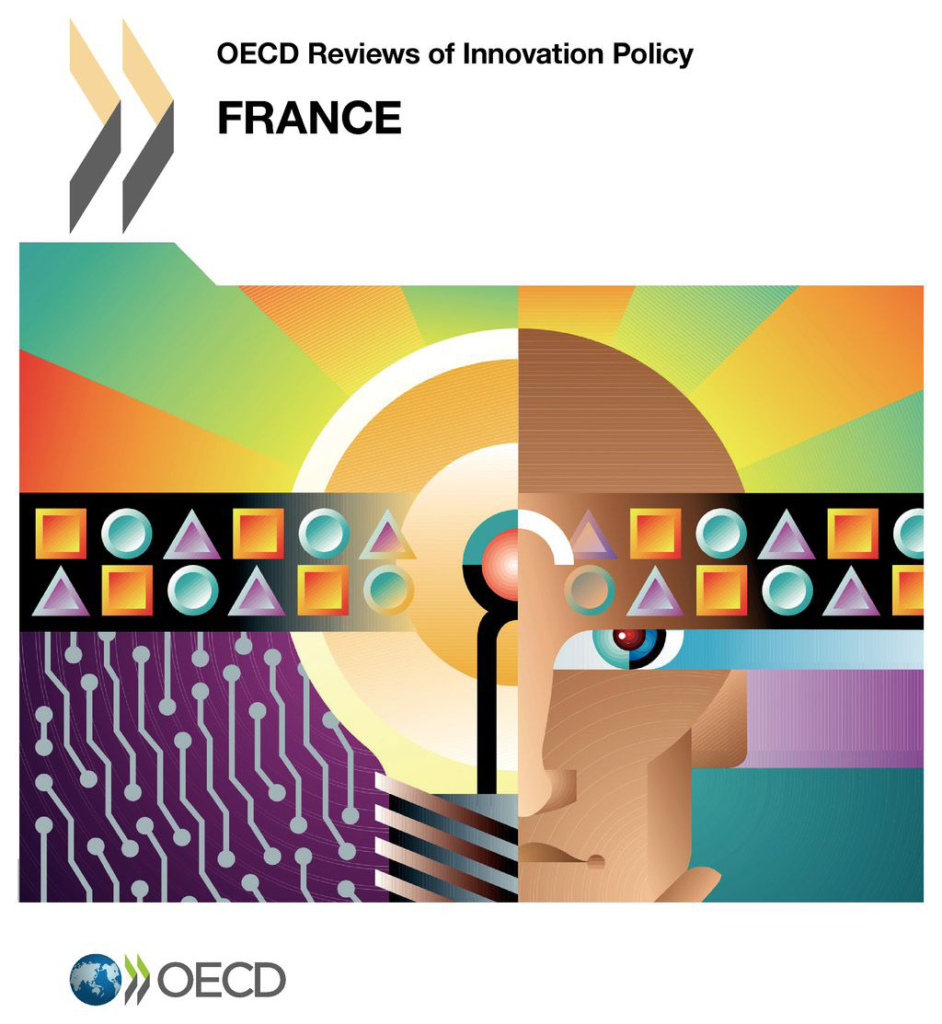The new OECD innovation review of France points to the need for significant policy changes to move national innovation performance from ‘average’ to ‘excellent’.
The OECD has played a vital role in defining modern science policy and its science and technology reviews of individual member countries were highly influential in the 1960s-1980s. In the last few years, the OECD has taken up this work again through a series of national innovation policy reviews. These take a broader approach to innovation, research and competitiveness, based on the idea of ‘national innovation systems’.
While the OECD reviews superficially look similar, each is commissioned to address specific questions that are important to the country involved. In response to the 2008 financial crisis, President Sarkozy launched the Investments for the Future (PIA) programme in 2009. PIA is a €35 billion (a further €12 billion were later added) investment in research, higher education, development and innovation, aiming to support recovery through improved competitiveness. Its nickname ‘the big loan’ is a reminder that the stakes are high since the loan will have to be repaid whether the PIA succeeds or not. The OECD review is intended not only to provide policy advice but also to set the baseline for an evaluation of the PIA after it ends in 2020.

France has suffered from low growth and declining industrial competitiveness for some years. Both labour and product markets are inflexible and taxation is comparatively high. Manufacturing’s contribution to GDP has shrunk, with the most successful parts now being low-R&D industries like construction and luxury goods. The share of GDP devoted to R&D is lower than in major competitor countries.
Some problems in the research and innovation system seem to stem from policies that focus on a high-performance elite at the expense of increasing overall or average performance. Higher education, for example, is still sharply polarised between a small number of high-status institutions (notably the grands écoles) and the bulk of the university system. Bibliometric analysis suggests that while there is some world-class research being done, overall the quality is merely ‘average’ – lying between the stronger-performing countries in the North of Europe and the weaker ones to the South.
Knowledge transfers between public research and business have figured strongly in recent French policy but their impact has been limited – owing perhaps to a mixture of weak implementation and over-high expectations of an activity that generates only modest returns in the rest of the world. Research-industry collaboration may be a more powerful means to valorise the commercial potential of public research.
French tax incentives for company R&D are amongst the most generous in the world but seem to have limited effects, given the high tax burden that companies face in France. It might even be that they reduce the fiscal disadvantages of locating R&D in France rather than providing a positive incentive to do so. Despite a lot of state support for innovation in the early stages of the innovation process and PIA funding to strengthen the limited venture capital capacity in France opportunities to fund scaling up and industrialisation of innovation are limited. French industry overall is not more innovative than the European average.
International discussion of French economic competitiveness tends to focus on inflexibilities in product and labour markets, wages, the length of the working week, over-regulation and so on. But it appears that the challenges go beyond this to other aspects of structure and governance. These include the continuing use of public research organisations that not only set research and innovation agendas but decide on them. This style may have been relevant to the grands programmes but is being abandoned in favour of separate policymaking and implementation structures in many other countries. The proportion of research funding allocated through competitive projects in France is among the world’s lowest. The research and higher education system is being reformed but the effects on the distinction between the elite and other organisations seem limited. The modest use of evaluation evidence impedes focused policymaking. Coordination and overall strategy in research and innovation policy are weak.
In effect, the PIA seems to function as an additional set of research and innovation incentives rather than providing a challenge to the prevailing structures. In response, attitudes are changing but it will take time to turn this change into significant performance improvements. Is this enough to change performance in the absence of more thoroughgoing reform?








